Configure Reolink RLC-410, 411, 420 and 422 4MP Network Cameras for Cloud Recording, Remote Monitoring and Playback
Contents
Step 1: Connect camera to the network and find IP address
1.1 Connect camera to the network
1.2 Find the Camera’s IP Address
Step 2: Configure the Camera Using the Web-based Configuration Tool
2.1 Setup or Re-configure Wi-Fi
Step 3. Configure the FTP settings
Step 4. Configure Video Profile and Image/Video Recording Options
4.1 Configure Video / Image Settings (Resolution, Frame Rate, Bit Rate)
4.2 Configure Video or Image Recording
4.3 Configure Motion Detection
Introduction
Reolink seems to only make 4MP outdoor or dome cameras. These cameras all have very high-end SPECs but are being sold for a pretty low price. Reolink is among very few vendors that support dual band Wi-Fi 2.4G and 5G network, and it has two antennas for great signal strength.
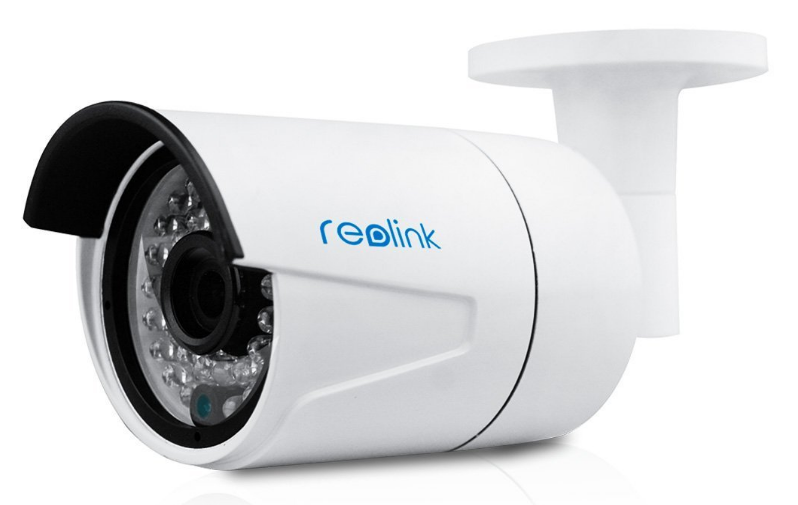
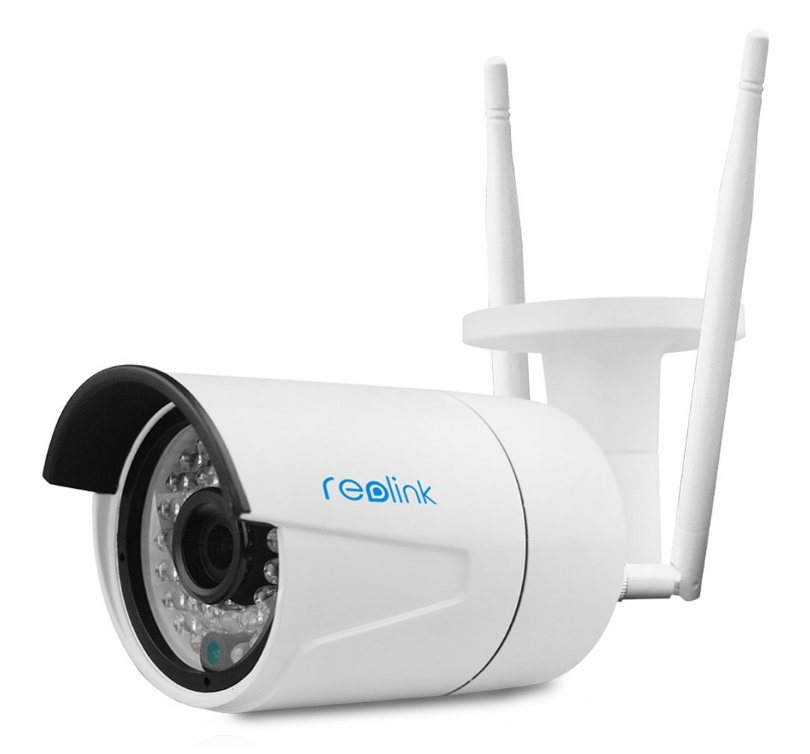
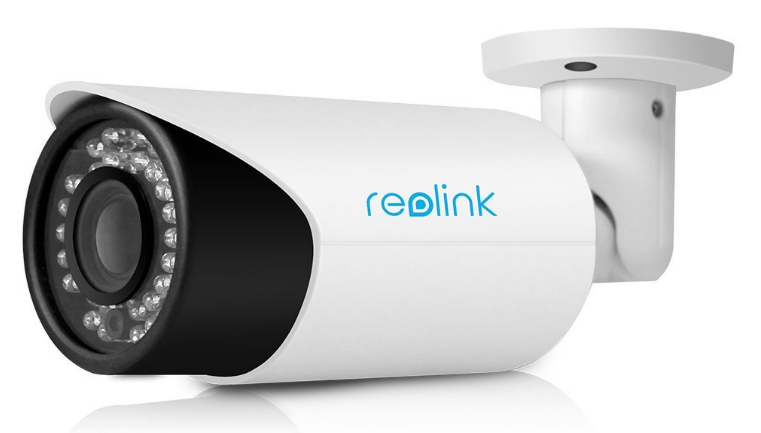
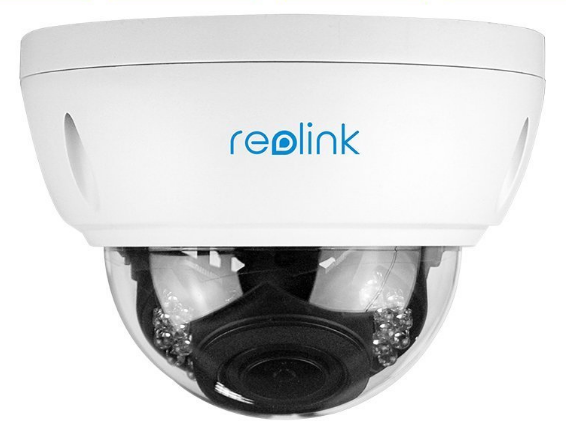
The main features include:
- Super HD 4MP video resolution at 25 fps.
- H.264 video compression, can upload .MP4 video clips
- RLC-410WS and RLC-411WS support dual mode 2.4G/5.8G WiFi with 2 Antennas, signal range: 300ft in open space
- Non Wi-Fi models support wired PoE connection; Wi-Fi models support regular wired connection
- 80 degree viewing angle and up to 100-foot night vision
- Microphone: Yes (Audio within 15ft)
Basic camera information
| Video / image resolution | 2560x1440(4MP),2304x1296(3MP),1920x1080, 1280x720 |
| Audio recording | Supported (range: 15 feet) |
| Image upload frequency | Not configurable. |
| Video frame rate | 1,2,3,...,30 fps |
| Night-vision | 66 to 100 feet |
| Image snapshot recording | Very limited support |
| Video clip recording | Supported |
| Motion detection | Yes |
| Continuous recording | Yes. |
| Supported video format | .MP4 |
| Connection type | Wi-Fi + wired; or PoE |
| PoE (Power on Ethernet) | Yes |
| Indoor / outdoor | Outdoor or Dome |
| Lowest pricing (as of 8/15/2016) | $74.99 |
| CameraFTP Editor's Rating | 8/10 (Recommended for 1080P/720P video & audio monitoring) |
Note: This document is not designed to replace the product manual from the manufacturer. The information provided is based on our knowledge of the model Reolink RLC-410 PoE Outdoor 4MP Network Camera. It may not be accurate or completely up-to-date. Users shall contact the manufacturer for all camera-related issues and contact us only for CameraFTP-related (cloud service / FTP) issues.
Most of the setup steps below are camera related and are very trivial. If you have finished these basic steps before, then you can skip Steps 1 and 2.
Step 1: Connect camera to the network and find IP address
1.1 Connect camera to the network
For wired/PoE connection, you just need to connect the Ethernet cable. For Wi-Fi connection, you can connect the network cable first and then configure Wi-Fi later.
1.2 Find the Camera’s IP Address
Please refer to the manufacturer’s manual for more detailed information. Usually you will run the included IP Camera Search Tool to find the camera. If your computer does not have a DVD/CD drive, then you can download CameraFTP VSS software to find the camera's IP address. As shown in the screenshot, the device name is usually shown as IPC-BO IPC-122 or other similar names. ( After you find the camera's IP address, you can stop VSS. Note: This camera is compatible with VSS-based Cloud Recording. You can use VSS as a cloud-enabled NVR, which requires a PC. )
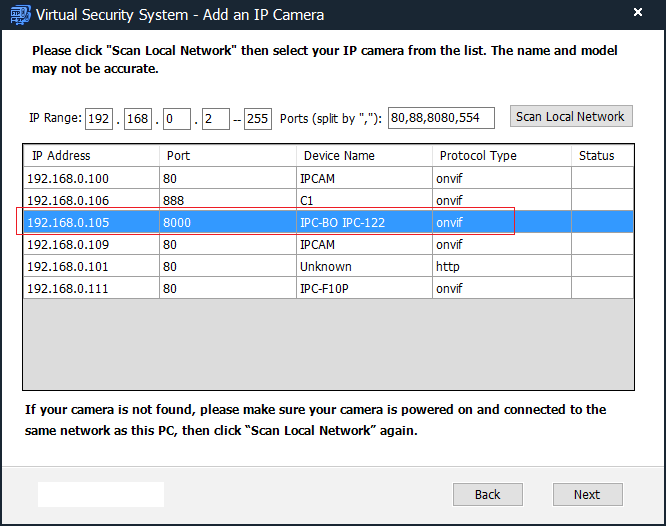
Step 2: Configure the Camera Using the Web-based Configuration Tool
Reolink is among very few IP cameras that can be configured in Chrome. You can use Chrome, Firefox, or Internet Explorer to configure it, just enter the following URL:
http://IP_ADDRESS/(e.g. http://192.168.0.105)
The default username is admin, and password is empty (no password). (It is recommended that you change the password.)
After you log on to the camera, you might be required to install a plug-in. If so, install it. Otherwise, you will see the video live view screen as follows

Click the Gear (or Setup) icon on the top-right corner, it will display the Settings screen:
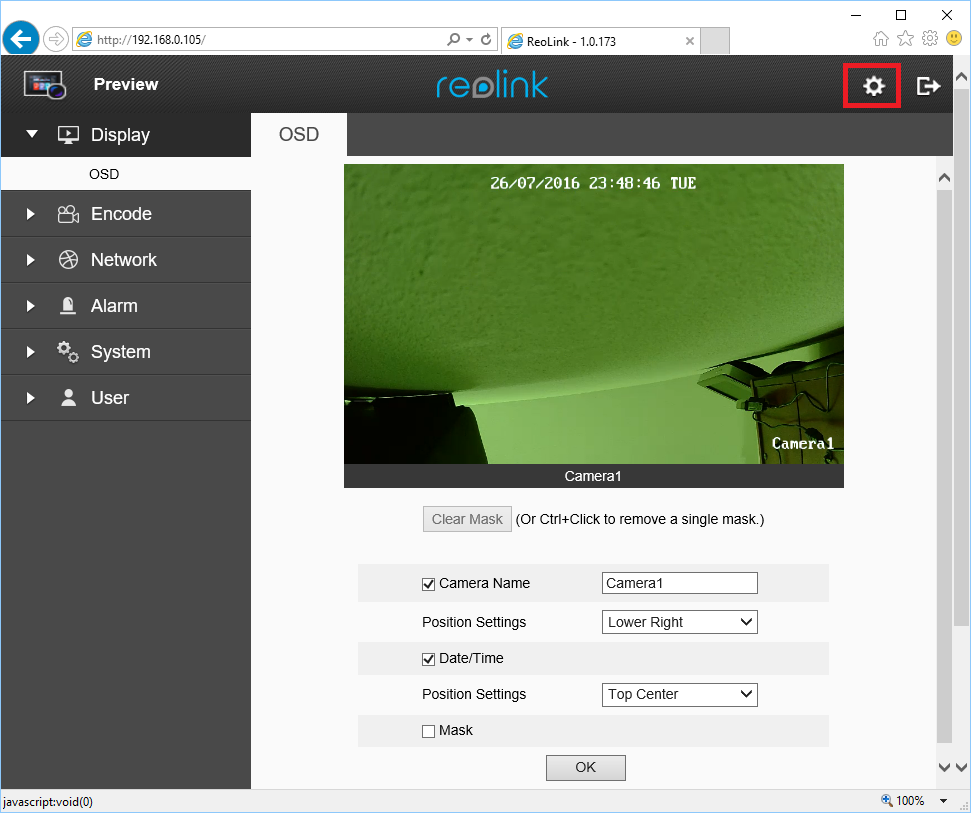
Note: In July 2016, Reolink released a new updated version firmware. The new firmware is dramatically better as it supports all major browsers and the video format
has been changed from a proprietary format to .MP4 format. If your camera does not have this version firmware, please make sure you upgrade it.
With CameraFTP's service, most regular setup steps are not required. (You can check these steps in the Camera Configuration screens to make sure everything is configured correctly).
2.1 Setup or Re-configure Wi-Fi
If you had already connected the camera with your wireless router, then skip this step.
Otherwise, click the Network tab, then click Wireless Setup to configure your Wi-Fi settings.
Step 3. Configure the FTP settings
Click Network --> Advanced, then click the FTP tab, you can see the screen as follows.
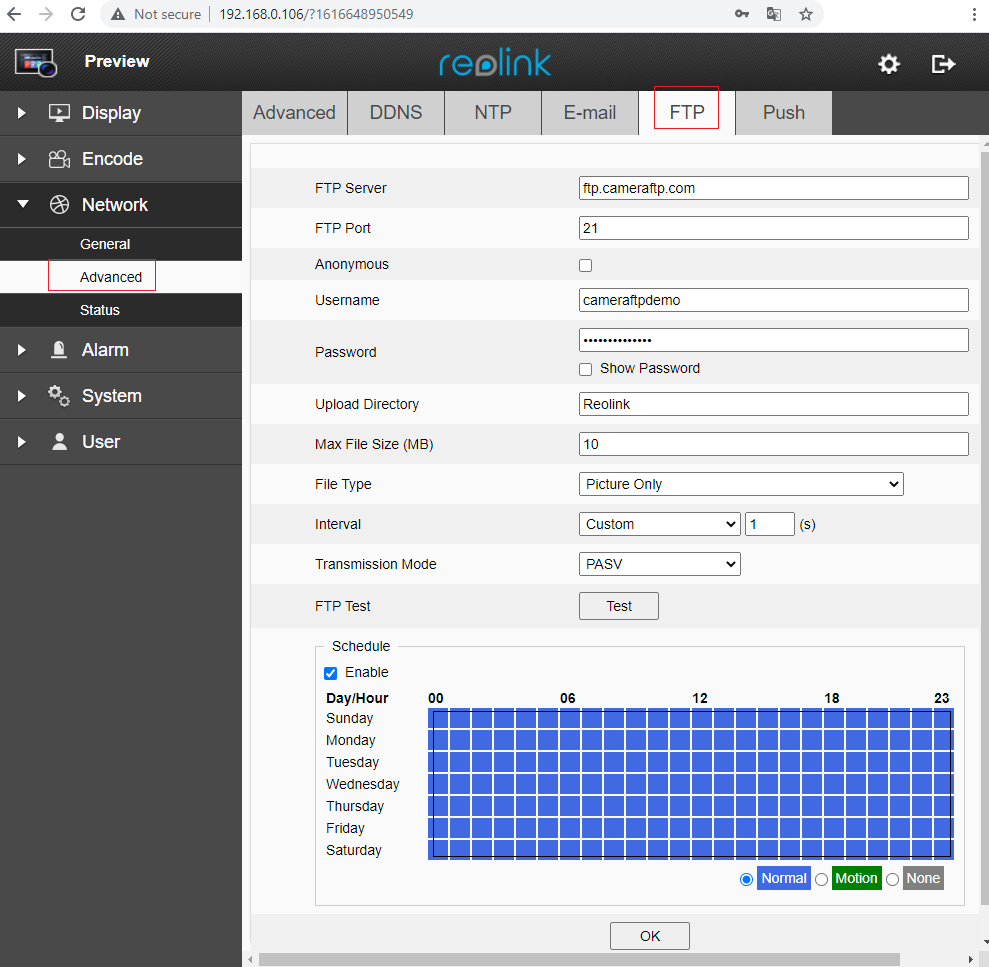
If you don't already have an account on CameraFTP, please visit www.cameraftp.com and sign up a free trial account. CameraFTP offers 3-day free trial. When the trial ends, you will need to order a subscription to continue using the service.
Assuming you already have a CameraFTP Account, then you need to enter the following info:
- FTP Server: ftp.cameraftp.com
- FTP Port: 21
- Upload Directory: You camera folder path, usually it is your camera name.
- Max File Size(MB): 10 (Enter a small number if possible; the minimum is 10)
- Username and Password: The username is your cameraftp.com username; the password is your camera's license key. You must add a camera from www.CameraFTP.com first. For testing purpose, you can also use your CameraFTP password.
Note: In the above screenshot, reolink is the folder name, which is the same as the camera name that you created on www.CameraFTP.com website when you added a new camera.
We will talk about the schedule section later. For now, click Ok to save the settings.
After that, you need to configure the video / image resolution.
Step 4. Configure Video Profile and Image/Video Recording Options
Reolink cameras cannot support image-based recording. If you ordered an image recording plan, you need to cancel it and order a new video recording plan. (You can contact CameraFTP support to get a credit). If you ordered a video recording plan, you need to configure the video settings based on your subscription.
4.1 Configure Video Encode/Profile (i.e.: Resolution, Frame Rate, Bit Rate)
Click Encode --> Encode, you will see the screen below.
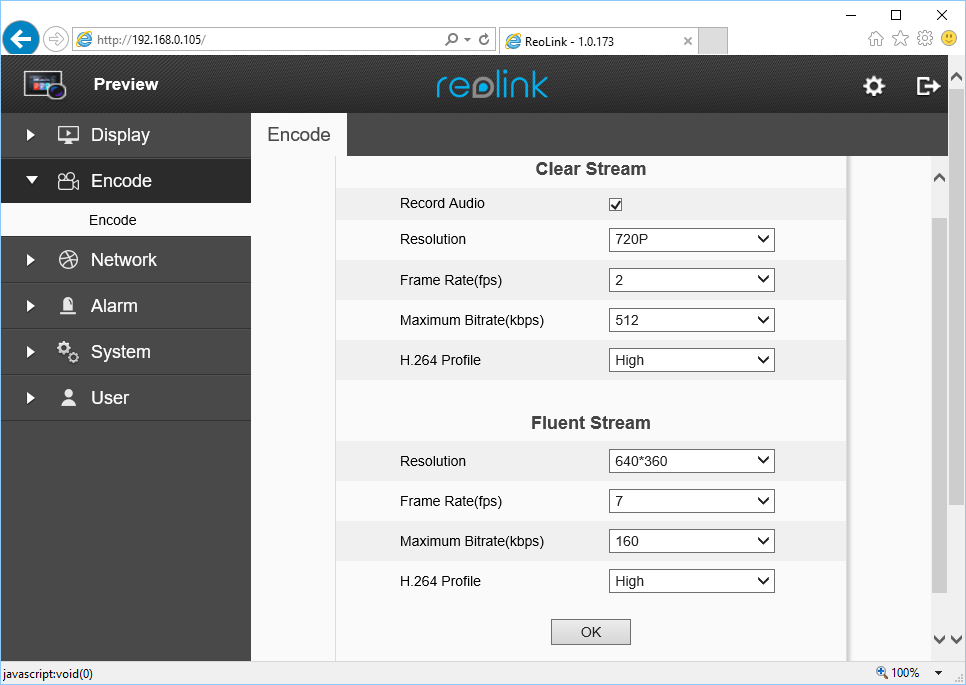
You only need to configure the Clear Stream, which supports 5 video sizes: 2560x1440(4MP),2304x1296(3MP),1920x1080 and 1280x720. High resolution video can use a lot of network bandwidth. We usually recommend 1920P and 720P resolution only. You can certainly set it to 4MP if you have a very high quality requirement and you have enough upload bandwidth. To play 4MP video at the best video quality, you will need to have a 4K TV or monitor.
The resolution and frame rate should be based on the plan you subscribed to;
The Bit Rate is a little tricky. Setting it too high will use too much bandwidth, thus dramatically slow down your network, causing failed uploads; setting it too low will affect the video quality. You can use our bandwidth calculator to estimate the bandwidth. Visit www.cameraftp.com, click Pricing, and then customize a service plan. See the screenshot below.
Note for estimating the bandwidth, Number of Cameras should be set to 1.
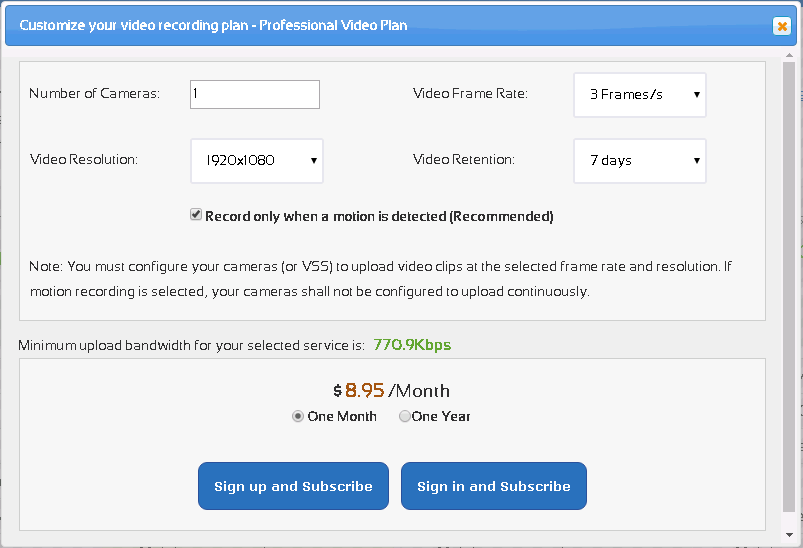
For the video plan of 1920x1080, 3 frames/s, the estimated bandwidth is 770Kbps. You you can set it to a value smaller than 1024Kbps.
Click Ok to save the video settings.
4.2 Configure Continuous Video Recording
If you ordered a continuous video recording plan, you only need to configure it in the FTP settings page.
A screenshot
is provided in the FTP section.
In the Schedule section, check "Enable" first, then check "Normal", then select the schedule for continuous recording.
If you keep clicking on a cell, the color will loop through blue, gree and gray. Make sure the color is blue for continuous (normal) recording.
Reolink cameras will upload one video clip and one image each time. While the max video file size is 10MB, each video file size is likely
to be close to 10MB, which is usually 1 to 3 minutes of video. Thus image recording frequency is at about 1 image per 1-3 minutes.
In principle, you need to order two camera licenses. In this case, CameraFTP will waive the image recording license. You only need to order
a video recording plan.
For a motion recording plan, you also need to configure it in the FTP settings page first. In the Schedule section, check "Enable" first, then
check "Motion". Again, you need to select the schedule for Motion recording. Make sure all cells are green for motion recording.
After motion recording schedule is setup, you must also configure the motion detection settings.
4.3 Configure Motion Detection (required)
Here you need to configure Motion Detection schedule, sensitivity and detection area.
Click the Alarm --> Motion as shown below.
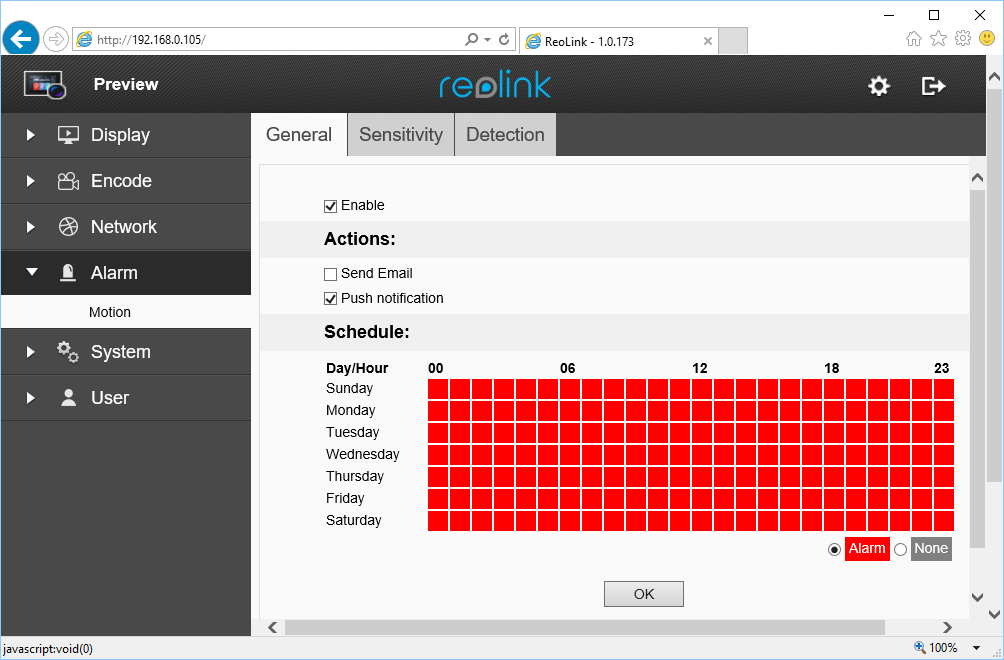
First, check "Enable", then check "Alarm" and select the motion detection schedule.
Make sure all cells are red for motion detection schedule.
Click the Sensitivity tab, and select a sensitivity level. Usually you will set it at the medium level during all times.
Click Ok to save the changes.
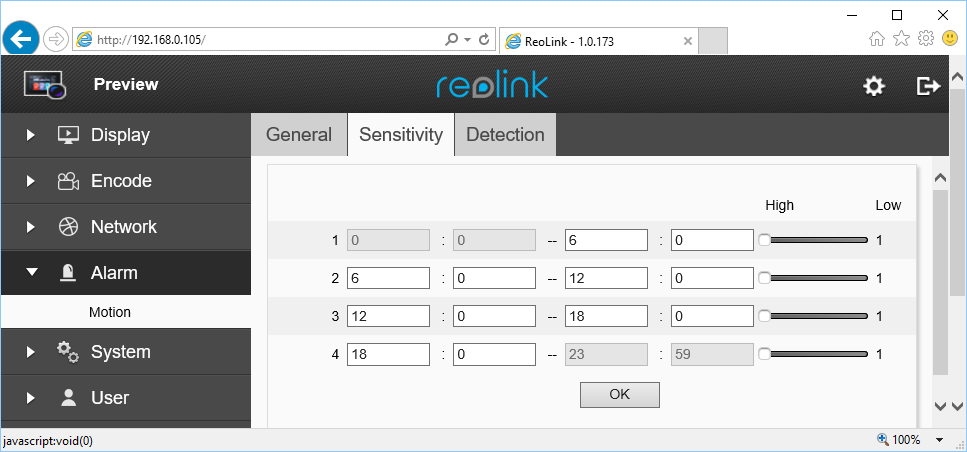
Click the Detection tab, then draw a motion detection area on the preview video, click Ok to save it. See the screenshot below:
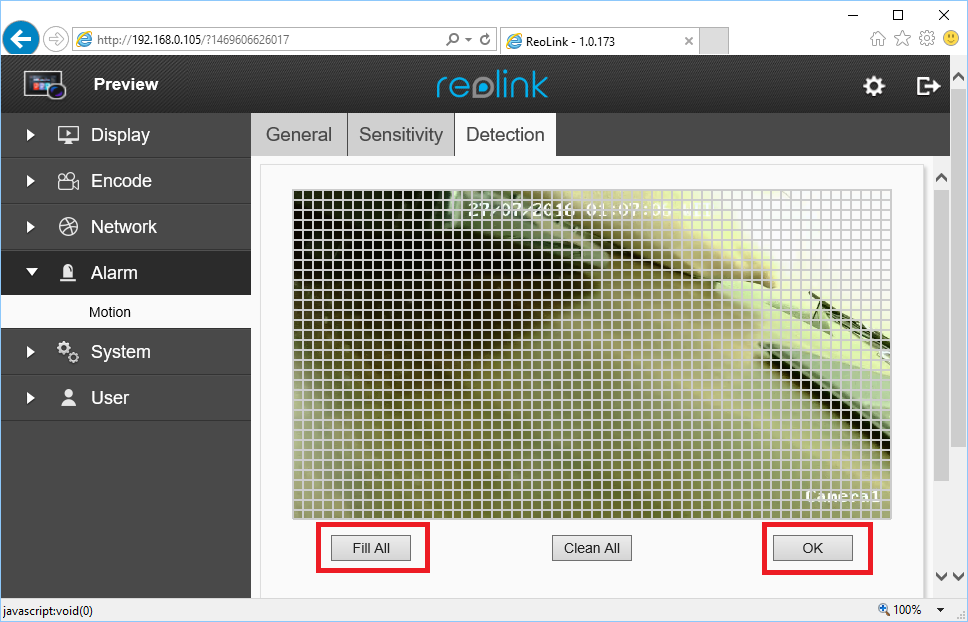
NOTE: Please do not configure both continuous and motion-triggered video recording. It will be considered as two camera licenses!
You are all done!
5. CameraFTP Viewer
If you need to make changes, you can run the CameraFTP Virtual Security System program again to find the camera’s IP address, and then access the camera’s Configuration pages.
After your camera is setup, you can visit www.cameraftp.com to view or play back your recorded footage from anywhere. You can also download CameraFTP Viewer App for iOS, Android and Windows Phone.
Note: This camera is compatible with VSS-based Live View, Cloud Recording and Local Recording. You can use VSS as a cloud-enabled NVR, which requires a PC. If you want to use VSS with this camera.
Cannot get it to work? Please read our Trouble-shooting Guide.
